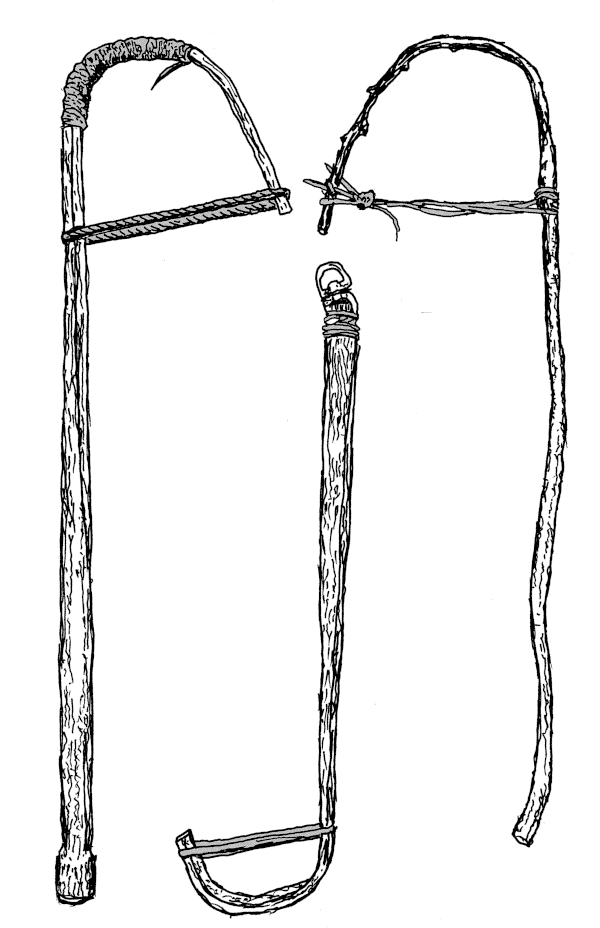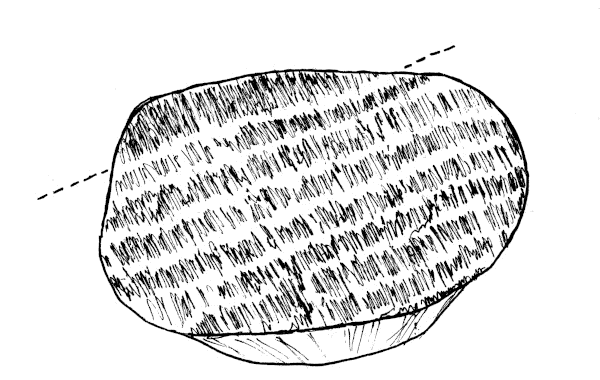
Figure 1: Three Bent Thrawcrooks.
| Home | Equipment | Ropemaking |

Figure 1: Three Bent Thrawcrooks.

Figure 2: End Grain and Growth Rings.
Splitting is important because it preserves the continuous grain in the wood. A sawn piece of wood will split where the grain runs out.[815] Next, decide which face of your stave is going to be the outside of the crook's curve. This should be the widest face parallel to the growth rings. In Figure 2, you would split along a line parallel to the dashed line. Mark this side, and DO NOT trim any more on this side. Thin only on the side opposite your marked face. This will be the inside of the curve.
Once you've reached your desired thickness, it's time to apply heat. Steam bending is the most common method. You can find plans for steam boxes on-line. I took the biggest pasta pot in the kitchen, filled it 3/4 full and got it boiling on the stove. I put the end of the stave I wanted to curve across the pot and put the lid on. I let it sit in the steam for a good long time, then tried to bend it. Then I let it steam for a little longer. It always takes longer than you expect.
When your stave flexes easily, with no crackling noises, bend it into the shape you want, and secure it somehow so it will cool that way. Careful, the stave will be boiling hot, protect your fingers from burns. The simplest method to hold the shape is to tie a string across the curve, but you can make a clamping jig if you think you might make a batch of crooks.
Then cut a notch or wrap a collar around the short arm of the crook, to keep the fibers from sliding into the "V", and you are ready to start twisting.
The crook on the left, in Figure 1, gave signs that it wanted to crack at the first part of the bend, so I reinforced it with a French Whipping, (ABOK[040] #3450).

Figure 3: Forked Branch Crook.
In Figure 3, the main branch came down on the lower right side of the 'Y'. The two sub-branches are the only parts kept, and they are then trimmed and smoothed for easy twisting.
| Colophon | Contacts |